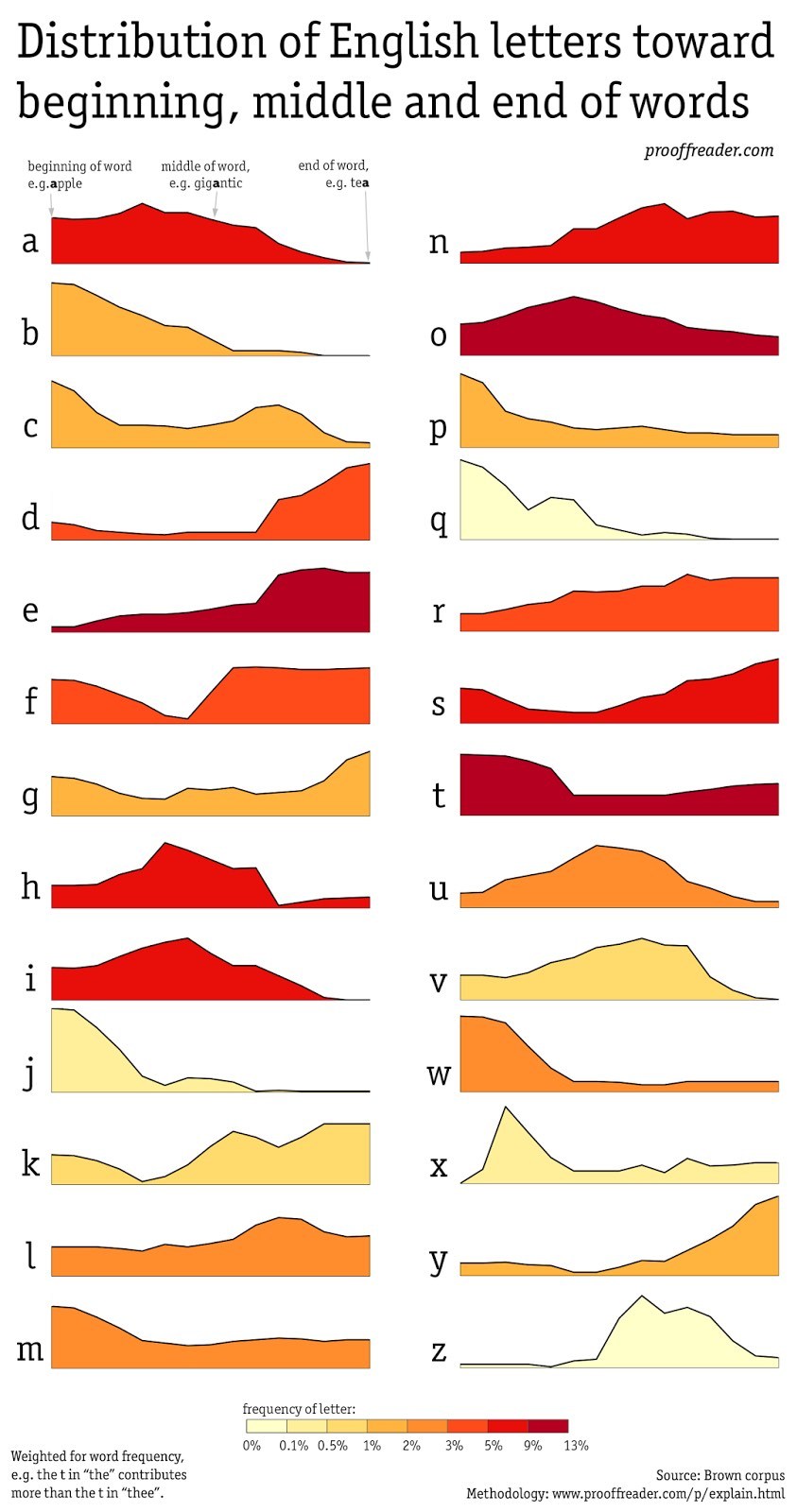Text
Maud Wood Park: Forgotten Feminist, Proto-Anthropologist, Bad Bitch
In the summer of 2018, I spent three weeks in the Library of Congress researching twentieth-century women political leaders (think suffragettes, early legislators, etc).

Mostly I skimmed workshop pamphlets and stared, unblinking, at indecipherable handwritten correspondence. But one woman in particular had me rapt.
[Extremely Stefon voice] Maud Wood Park’s story has everything - suffragette drama, a trip around the world, and a secret (second! Post divorce! That scandalous queen!) marriage that *definitely* disappointed her dad.
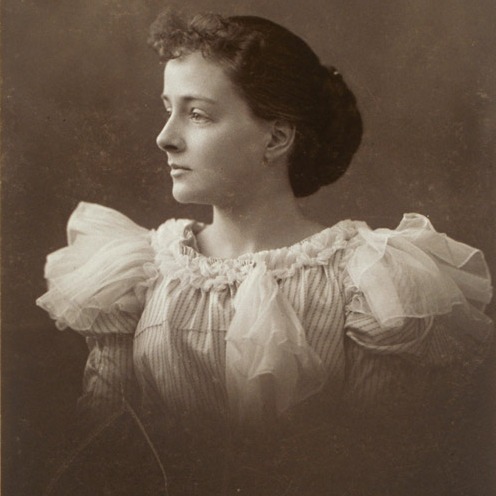
(Photo from: https://www.radcliffe.harvard.edu/schlesinger-library/collection/papers-maud-wood-park-in-womans-rights-collection)
Born in 1871 in Boston, Maud Wood Park was a no-nonsense activist ahead of her time. I call her “forgotten” even though she’s well-known to scholars of women’s suffrage (NERRRDS), because she’s largely left out of public school lessons featuring big names like Susan B. Anthony and Elizabeth Cady Stanton. Yet her work as a lobbyist with the National American Woman Suffrage Association and as the first president of the League of Women Voters made her a centrally important figure in the struggle for American women’s suffrage.

(Maud pictured 4th from the right. Photo from: https://www.radcliffe.harvard.edu/schlesinger-library/collection/papers-maud-wood-park-in-womans-rights-collection)
Even more interesting than her activism (lol sorry, women’s rights) was her personal life.
Maud did her own damn thing - she chose not to have children, eschewed religion, traveled around the world without a male escort, and never stopped fighting for women’s rights. She married her first husband after meeting him in college (she went to Radcliffe, A.K.A. ~Lady Harvard~ because She Smart And She Fancy), and then divorced his ass when she was 35. Two years later, she ~secretly~ married Robert “Bob” Hunter Freeman.

(Above: Bob and his bowler hat. Photos from the LoC collections)
Bob was ~an actor~ and theatrical agent (yes Maud, I feel you, who among us has not pined for a sensitive artistic type). They both traveled so often for work that they were never able to officially, publicly settle down and cohabitate. Instead, their marriage remained secret to all but a few close friends, and they met clandestinely in hotel rooms during Maud’s lecture circuits. They also shared a robust (there are SO MANY LETTERS, you guys) correspondence. Many of their letters focus on their interpersonal drama and semi-tempestuous but deeply-loving relationship, and you bet I read all that shit.
They had serious differences and disagreed constantly. Bob gave Maud shit about her temperament and lack of religion, and she gave him shit about his lack of logic.
In the 1915 letter to Bob below, Maud openly and unrepentantly admits to being a stone-cold bitch (my heroine..!), describing herself as “a cold, hard, self-contained, self-centred, ambitious and extremely critical woman.”
(Maud’s a Slytherin. Obvs.)
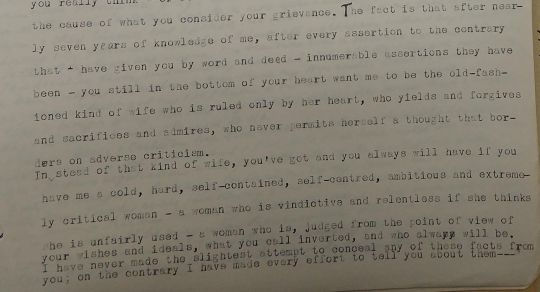
Maud knows herself. Maud accepts herself. Maud does not care about your feelings.
Bob, on the other hand, was a total Hufflepuff. In the funny 1915 letter below, Maud writes to him about how much her “man-hating” spinster friends love him, seeing him as more of a womanly kindred spirit than a man. Their high praise even inspires her to (grudgingly, poorly... Maud is all of us) embroider Bob’s initials onto some handkerchiefs, even though she “hadn’t done anything of that sort for over 20 years.”
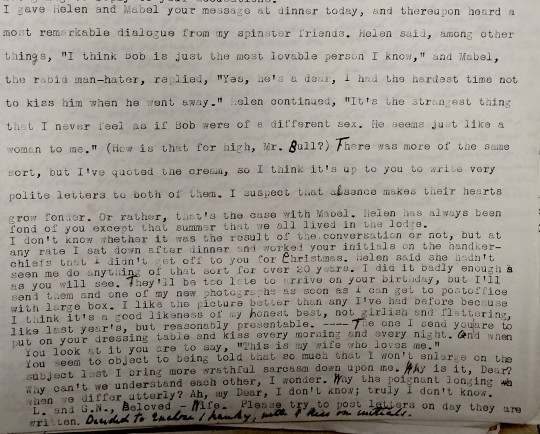
Ah, ~True Love~ :’)

(Above: Maud and Bob, basically)
Maud was an independent thinker, and her lack of religious belief troubled Bob at first. She explained her outlook on life to him in a 1908 letter:
“I feel a sort of responsibility to myself and to others, irrespective of God’s existence or non existence. I think it is the effect of my keen perception of the rights of all other living creatures, black, white or brown, animal as well as human. It explains my passionate democracy and my sense of outrage at the injustices that women have to bear. It does not rest on love of God or recognition of Him; not even on love of men, but rather on the craving of my whole nature for justice. It’s the best thing in me, my only effective weapon against my egoism.”
Clearly, humanist ideals fueled her activism at a time when many involved in social reform movements held beliefs rooted in Christianity.

(Above: the Women’s Christian Temperance Union, for example! Photo from: https://sites.google.com/site/orangewomenstemperanceunion/background-on-women-s-christian-temperance-union)
Maud was also kind of an amateur anthropologist - she traveled around the world to study the conditions of women in various cultures.
Funded by a wealthy sponsor who supported her work for women’s rights, she struck out on a two year journey in 1909 to investigate women’s lives in far-flung locales including Singapore, China, India, Australia and New Zealand, New Guinea, Bhutan, and elsewhere.
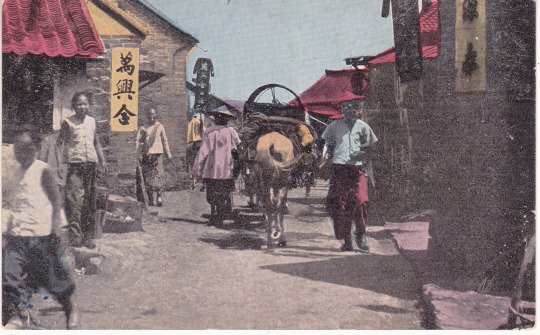
(Above, postcard of Chefoo, China, circa 1908, from: https://www.hippostcard.com/listing/street-in-chefoo-china-postcard-c1908/16726374)
Her views reflect the times and an understanding of universal womanhood that’s been deconstructed by postcolonial feminist scholars, but she recognized the importance of cultural differences.
Before women could even vote in the U.S., Maud was going around stressing the need to understand the various ways women lived around the world.
Rather than just exoticizing foreign tropical locales, she described their complexities. Maud talked about the widespread poverty in Chinese villages in the wake of nineteenth-century British imperialism and described India as “huge and enormously complicated” in a February 9th, 1920 letter written on a train from Darjeeling to Calcutta, for example.
She exhibited an anthropological curiosity (even if she lacked a little tact), writing this detailed description to Bob on June 18th, 1909:
“This afternoon I did get off by myself in a rickshaw in a town I never heard of and poked around for an hour in unimaginably dirty and crowded streets. The Yang-tse-Kiang is a beautiful broad river, but almost deserted on the banks except for occasional cities of large towns where the foreign “Concession” is nearly opposite the landing. If we can we get away from the Concession in these places and into the Chinese town, usually enclosed by a wall. There indeed everything is different: muddy, smelly, narrow streets, swarms of men, some children and fewer women, (those who are well-to-do stay in the “Inner Apartment”) endless little dingy restaurants half on the street where the cooking is all in plain sight, ramshackle one-story houses leaning against each other in order to stay up at all. Most foreigners are disgusted and flee as soon as possible, but I enjoy it all and want to go poking up every lane and into every courtyard.”
Maud also recognized the pervasiveness of Western culture way before scholars started theorizing about “globalization.” In 1909, she wrote:
“Fate seems always to pull at my skirts and drag me back to the surroundings of the inescapable West. It’s marvelous how pervasive that is out here in the Orient – the trace of the West. –I begin to believe that there isn’t a village in Asia where you can’t buy bottled waters and find at least one Englishman. I may have to go to central Africa to get the unadulterated East; and even there I suppose I’d find T. Roosevelt or his remains.”
I choose to believe that she would have made a good intersectional feminist activist and anthropologist had she been born a few decades later.
Maud stressed that women deserved freedom above all in both her personal and professional life. She lobbied for women’s rights tirelessly both to legislators and to Bob, who started out skeptical but was eventually won over.
In the 1915 letter below, Bob wishes Maud success and writes that he’s come around in favor of women’s suffrage once and for all, finally convinced “of something which perhaps should always have been obvious, but wasn’t.”
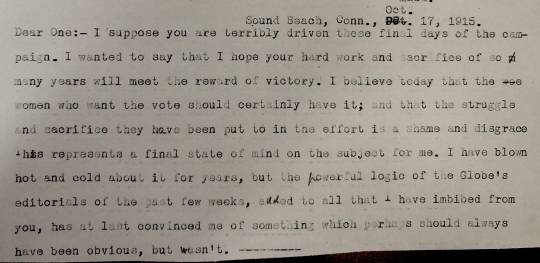
(That’s f***ing right Bob, get it together)
Maud Wood Park - world traveler, legislative expert, and even playwright - was a fierce feminist. She seemed to foreshadow the third-wavers of the future. In a 1912 letter (one of her many extended arguments with Bob), she considered the future of the women’s movement and women’s ultimate place in society:
“I resent so bitterly the arrogance of men who attempt to say that what men want is the measure of what women should be – or the added insult of attempting to interpret Nature or the Creator for women. Certainly if there is any record of what nature intended it is to be found in the powers that she has given women. If a woman has a beautiful voice it seems likely that nature meant her to sing, etc., etc.
The moral of all this is – don’t spend any more time or words or ink in trying to show what women were meant to do. Spend your energy in giving women themselves a chance to show what they were meant to be.”
Amen.

#Maud Wood Park#Feminism#suffrage#women#women's rights#feminist#history#anthropology#research#archives#womens liberation#suffragette#votes for women#romance#star-crossed lovers#herstory#women's history
2 notes
·
View notes
Text
Death, Personhood, and George H.W. Bush
~Let’s talk about death, babyyy
Let’s talk about you and me~~ 😎💀
Idk about you, but I’ve found it a little jarring to hear journalists and newscasters refer to George H.W. Bush, “his body,” and “his remains” seemingly interchangeably. On NPR this week, people discussed how “His body will be flown to Washington on the plane formerly used as Air Force One...” or “His remains will be flown...” but headlines also explain that “George H.W. Bush lies in state at the Capitol.”
So, is it still him, lying in state and being buried? Or is it now only his body, whatever made him a person having made its way to the great blue yonder or whatever? How do we think about personhood and death?

It seems that here in the U.S., we’re kinda wishy-washy about whether we think people should still be discussed as people once they’re no longer among the living. And unless one is going all Hamlet Act V, Scene I, people don’t usually physically include dead people in daily life. Although the Long Island Medium etc. have sure made a profit talking to em! (Debating the existence of an afterlife is a little beyond the scope of this blog post)
Anyway, all this talk of H.W. & his body has gotten me thinking about--you guessed it--anthropology. There are many ways of thinking about this very issue around the world, and lots of interesting ways of dealing with, and talking about, the dead.
As Milton Cohen explains, “Death ritual, like much of human behavior, is an expression of a cultural blueprint, of attitudes, values and ideals passed down by parents, and their parents, which an individual learns as a member of society.”
Take the Torajans of Indonesia, made famous by the linked Nat Geo article. When family members die, they remain VERY MUCH a part of the world of the living, and are dressed, fed, and talked to for months or even years before eventually being buried (only to be periodically unburied and brought back out for changes of clothes, etc.)

The Sora of India work with shamans to have dialogues with the dead about subjects like illness and inheritance. They consider death to be “not the negation of life but rather a matter of its transformation and continuity, albeit with relatives who now dwell in the underworld along with all the other spirits of the dead.”
Seem weird? Do you think about death more in terms of a “you’re either alive or not” black and white thing? Well, remember...

It’s not just mediums, psychics, and nineteenth century spiritualists in the western world... anyone who experiences a “sign” or even questions what their dearly departed grandma would think of their life choices might consider how they are, in a sense, communicating with the dead.
Nobody’s (probably?) gonna go so far as to keep unburying and redressing George H.W. Bush (er--George H.W. Bush’s body?) but our apparent inability to decide whether he is still a person or just a body indicates the weird complexities surrounding death and personhood in our society.
0 notes
Photo

The Geography of the Dead: Mapping 93,000 of America’s Graveyards and Cemeteries
190 notes
·
View notes
Text
50 States of McMansion ℌ𝔢𝔩𝔩: King County, Washington
Happy Halloween, folks! Today, as a special treat, I will be giving you something EXTRA SCARY: 10 (ten) 𝖊𝖝𝖙𝖗𝖊𝖒𝖊𝖑𝖞 𝖈𝖚𝖗𝖘𝖊𝖉 𝖒𝖈𝖒𝖆𝖓𝖘𝖎𝖔𝖓𝖘 from the breezy suburbs of Seattle.
If you really want to be scared: all of these houses cost more than $1.5 million dollars despite looking like they were made with, like, thirty dollars. I guess the scariest thing of all for so many of us is 𝖗𝖎𝖉𝖎𝖈𝖚𝖑𝖔𝖚𝖘𝖑𝖞 𝖍𝖎𝖌𝖍 𝖚𝖗𝖇𝖆𝖓 𝖍𝖔𝖚𝖘𝖎𝖓𝖌 𝖕𝖗𝖎𝖈𝖊𝖘
Well, without further ado:
#10: Asphalt Purgatory

this house really drives home the banality of ugliness but it gets bonus points for the garage, which gives the great pyramid of Giza a run for its money. 9
#9: Vile “Villa”

If you really think about it, so many horror stories come true every day if you’re a tree. you know, like helplessly watching someone slaughter your neighbors and friends
#8: Casa del No

(computer voice): enhancing

this is just an abomination, completely eviscerating the millennia-long tradition of architectural detailing in the same way facebook has eviscerated the meaning of the word “truth” for millions of old people addicted to insane right-wing conspiracy pages
#7: Thinly-Veiled Window Showroom

sometimes i wonder if people deliberately build these houses just to make me (personally) angry, and this is one of those times.
#6: Stop Making Sense: The House

(shouting desperately as I’m getting dragged away by police) FERNGULLY WAS A DOCUMENTARY
#5: Duckface

did these people build a house just using random parts stolen from other construction sites or something
#4: Obligatory Faux Chateau

pin this to your halloween moodboard because this place is definitely cursed in every way imaginable
#3: Great “woof, that’s bad,” Lodge

i would make a Twin Peaks joke but none of those gables quite match
#2: (spooky voice) “code violations”

this is like the luxury cabin in the woods version of groverhaus
#1: Please, I beg you, No Mo PoMo

Where to even start with this house. First of all, it is trying to be like 30 different things at once: Italian Villa, French Eclectic, Tugboat, a thinly veiled metaphor for the perils of human indecision. What personally pushed me over the edge was this:

HOW (how??) does this happen? (Mulder writing in his log at the end of an episode of The X-files voice): Only in a world that has forsaken love and truth, in favor of fear and lies, do such abominations unfold.
Happy Halloween, folks. Don’t drink and drive. As for candy: the world is ending, eat trash twizzlers be free!!! See you soon with Vermont. Also, there’s a few bonus McMansions from this post viewable on Patreon for all subscription tiers!
If you like this post, and want to see more like it, consider supporting me on Patreon!
There is a whole new slate of Patreon rewards, including Good House of the Week, Crowdcast streaming, and bonus essays!
Not into recurring donations or bonus content? Consider the tip jar! Or,Check out the McMansion Hell Store ! 100% of the proceeds from the McMansion Hell store go to charity!
Copyright Disclaimer: All photographs are used in this post under fair use for the purposes of education, satire, and parody, consistent with 17 USC §107. Manipulated photos are considered derivative work and are Copyright © 2018 McMansion Hell. Please email [email protected] before using these images on another site. (am v chill about this)
5K notes
·
View notes
Link
On the importance of “soft little sciences.”
#anthropology#social science#marine biology#endangered species#mexico#politics#climate change#everything sucks#science#porpoise#extinction
0 notes
Photo


do you ever think about how some things haven’t changed in nearly 3000 years and want to cry a little bit
3K notes
·
View notes
Text
London cabbies & white canes: your brain in the world
Where are ideas located in the world? In our brains? Outside our brains? We often think of our ideas as being in our heads. But what about when we write our thoughts down on paper? (Or in my case, shout out to the void via tumblr, heyy~~)
Cognitive archaeologist (and certified cool name owner) Lambros Malafouris argues in his book How Things Shape the Mind: A Theory of Material Entanglement that, as per the title, our minds aren’t separate from the material world at all.
This suggestion goes against the classic idea of Cartesian dualism (“I think therefore I am”), that the mind and the body are separate things that interact. And it aligns with a lot of contemporary scholarship in the social sciences that argues that the material world around us is really important.

(...sorry, René.)
So, how do our minds escape our heads?
That’s a dramatically weird way of putting it. But basically, his idea is that the mind develops from brains, bodies, and things working together. So to study cognition, or how people think, you also have to study material culture (this is called “Material Engagement Theory”). Minds exist in the world and depend on interaction.
One example/metaphor is a blind person using a cane as sort of an extension of their bodies and minds and therefore part of their cognitive processes. A guide dog extends this idea even more--the dog’s eyes and intelligence work alongside the human in a form of shared cognition.

(...and such goodness, I cry)
Whether this specific theory is 100% the best way to conceptualize brains and ideas and things or not, it’s undeniable that cognition and the brain can be shaped in cool ways by our material environment.
One study of London cab drivers found that with their years of training and driving through the city’s tangled streets, the part of cabbies’ brains associated with spatial navigation grew considerably--their brains rewired themselves to be better at navigating quickly and efficiently as they drove, thanks to London’s complicated streets. (As someone who’s constantly amazed at the ability of city bus drivers to not run into other cars, I’m not surprised.)
And things like being addicted video games change the structure of your brain, too!
As scientists have known for years, when it comes down to it, what goes on in our lives, brains, and bodies isn’t a case of nature versus nurture, but nature developing through nurture (and vice versa) in a complex interplay of culture, experience, and biology.
#anthropology#cognitive science#cognition#archaeology#fun fact#brain#ideas#how things shape the mind#london#cabbies#academia#material entanglement#material engagement theory#science#nature#culture#biology#whew
0 notes
Text
Brief Fun Fact: London Tower Ravens
I’ve talked about my admiration (read: weird obsession?) for Rick Steves before, and this post again borrows from one of his travel guides’ glorious fun facts--this time, regarding London, a castle, and birbs!
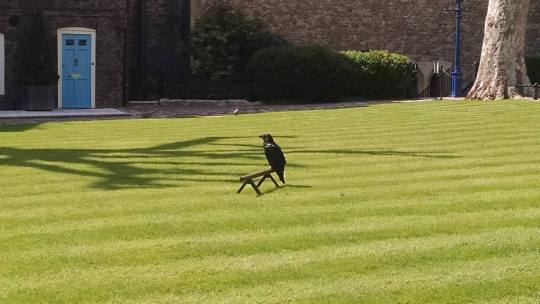
(above: crappy phone photo of fancy royal raven, by moi)
So I went to England with my best friend in 2015, and we proceeded to gleefully do as much touristy bullshit as possible--afternoon tea, Abbey Road, Shakespeare’s Globe, tacky red phone booth pics, you name it.
Because we like fun. And also I have zero shame about my intense-to-the-point-of-being-kinda-weird love for historical tours, ESPECIALLY when the guides wear fun costumes.

(pictured above, one of the ceremonial guardian Yeomen Warders at the Tower of London leading our tour. They certainly have fun outfits, although maybe it would be more respectful to refer to it as a ‘uniform’...)
Naturally, we had to check out the Tower of London, the Norman fortress (read: castle!!!) in the middle of the city where the crown jewels and lots of medieval armor and things are stored. And in what Rick refers to as a “goofy tradition” (whoa Rick, pot and kettle, man), one of the tour guides/guardians of the Tower (appropriately titled ~the Ravenmaster~~) has the job of taking care of the group of ravens that hang out and live in the castle complex. (yay, bird frands!)
...Okay, their wings are clipped and they sleep in a cage--they’re not choosing to stick around. But the cage thing might be for good reason, since there have been issues with foxes sneaking onto castle grounds and eating them. And another raven (named George. Daw.) lost his “job” because he wouldn’t stop eating tv antennas (??).
...London. ‘Tis a silly place.
Anyway, why??
According to legend, ravens have always lived at the Tower, and King Charles II heard (and believed) a prophecy in the 1600s that the Tower and the British throne would fall unless at least six ravens are kept there at all times. Spooky. (And probably actually a load of b.s., but... fun!)
At one point during WWII, bombing reduced the castle ravens numbers to one, but this disproof of the bizarre omen hasn’t stopped the practice.

(above: raven pals chilling around in their sorta sad cage habitat)
There are 7-8 ravens (the required 6 plus a spare or 2) permanently kept at the Tower, who are named individually and live like little bewinged kings and queens on a steady diet of raw meat, blood-soaked biscuits, vitamins, and occasionally roadkill. (<<do read their wikipedia entry, fun stuff in there)
And they provide a fun and weird extra thing to check out/gawk at at the Tower when ya get sick of staring at 17th century crowns and scepters!

#anthropology#history#british#monarchy#london tower#ravens#mythology#goofy traditions#castle#birds#birb
2 notes
·
View notes
Conversation
you, whispering: paleodiet
me, suddenly in your ear: waht did you sa
21 notes
·
View notes
Text
Fun Fact: Limeys
Ok so, I had previously thought this was something explained to all kids.
But then a few weeks ago I found out my roommate hadn’t ever heard of it, so now I’m thinking maybe it was just that my mother was especially into any fun facts that would encourage us to eat our fruits and vegetables. (Trust me, if you knew my mother and our requisite plate-of-salad-a-day childhood....)
And then, once I actually looked into the explanation of sailors and limes, it turned out that I didn’t know the whole story at all! (In line with that one Charlie Kaufman quote, everything’s always more complicated than ya thought.)
So!
Where did “Limey” as a slang term for a British person come from?
Welp, in the 18th century, long sea voyages were causing major issues for sailors whose teeth were falling out (both gross and, coincidentally, the theme of my most commonly reoccurring bad dream--a theme so popular that it has a dedicated website, blehhh). So leaders in the British Navy were (probably) like, “oh no something seems terribly wrong with our sailor dudes, let us investigate!”

(Their bad attitudes, bell-bottoms, and questionable impressment practices were another problem altogether.)
Surprise! Not eating fresh fruits and vegetables (my mother is shedding a tear somewhere) because you’re stuck on a ship with only, like, hard tack and rum to consume (probably) can lead to vitamin C deficiency and scurvy!
Weirdly, this should not have been news to anyone in the 1700s. British Navy surgeon James Lind gets credit for discovering the cure for scurvy because he did a scientific experiment about it, but including vitamin C-rich stuff like citrus fruits in one’s diet as a simple and easy way to prevent scurvy had been practiced for centuries (and arguably millennia) before the British Navy picked up on it and institutionalized the inclusion of citrus fruit juice in sailors’ diets.
But ok, eventually the Brits got with it and force-fed their naval crews lemon juice, and everyone was happier and healthier and had more teeth (yay!)
But wait, you ask, lemon juice? Then why were they called limeys???
This is the part I didn’t know (read more here)! Turns out, the British harbored some citrus fruit confusion (citrusfusion? Sounds like a smoothie flavor) and “lemon” and “lime” were both used as collective terms referring to citrus fruit in general, kinda like how we consider red and green apples the same kind of fruit.
So as for the origins of “limeys”... the British sailors were often called “lime-juicers” (here we see the beginnings of the “limey” term). But more accurately, at first they were “lemon-juicers.”
Aaand more interestingly, their citrus terminology confusion eventually ended up causing some major issues and setting medical knowledge back centuries. Womp.
The story is this: some Royal Navy guy (we’ll call him Dave) in the mid-1800s was all, “hey guys, these lemon-limes are working out super! But you know what would be better than importing the yellow kind of citrus fruit from our European neighbors?? Sailing to our own colonies in the West Indies and getting the green kind from there and using those instead!”
And Navy leaders were like, “wow, growing fruit ourselves to trade to ourselves, it’s a win-win, great idea Dave”
Except as it turns out, bad idea. Bad frickin idea, Dave.
Using limes instead of lemons seemed all well and good at first, but it turns out that limes contain way less vitamin C than lemons (and the long cross-Atlantic shipping process wasn’t exactly beneficial to the lime juice’s healthy properties either).
God dammit, Dave.
No one really noticed the problem at first because technology and nutrition overall had improved to the point where scurvy was less likely anyhow, with voyages taking less time etc... BUT THEN at the end of the 19th century, long arctic and antarctic expeditions began... and scurvy reappeared. (oh no!)
Even sailors who were drinking lime juice were getting sick on long arctic trips because the amount of vitamin C in limes wasn’t sufficient, and everyone was baffled and confused.
They started blaming scurvy on a host of other issues (including bacteria and rotten meat) since the whole idea of vitamins and vitamin deficiency hadn’t been developed yet. It was back to square one for scurvy prevention.
And this confusion lasted through the early 1900s! So many subsequent deaths could’ve been avoided with the extremely simple cure of just EATING FRUIT FOR GOD’S SAKE, a simple preventative technique that the Roman poet Virgil figured out back in like 25 B.C.E. Seriously.
But alas. Due to insufficient fruit terminology and a lack of scientific rigor, scurvy was a mystery again.
So as it turns out: science is hard, and apparently learning from history is even harder, and colonialism leads to bad ideas (thanks, Dave) and ruins everything. Boo! (Read a more extensive history of the confusion surrounding scurvy here)
But on the plus side, British sailors (and later British people in general) gained a (kind of cute, right?) fruity nickname. Moral of the story: when life (and your gross Navy diet) give you scurvy, make lemonade! (... I’ll see myself out.)
Final thought: in some cases “Limey” is apparently a derogatory term, which might make the most sense of all, considering that the smart way to go would’ve been to be a “Lemony,” and the use of limes instead was an unfortunate development... ah. The intricacies of fruit politics.
5 notes
·
View notes
Text
pop vs soda
Language is cool, language is fun, language is also very weird. (< a poem, by me)
...Obviously I’m not here to write poetry. (Although I did one time!)
I’m here to talk about ~*language variation~* in English.
You might not talk about it in those terms, but you’re definitely already familiar with it, because it’s evident all around us all the time. (< spooky)
There are many different ways to speak English (and many different Englishes), and they’re constantly changing. Different dialects (forms of a language), or accents, or vocabularies can happen due to geographic regional, educational, or class differences, among other reasons. ~*For example~* :
Lexical (vocabulary) differences: do you know what “horripilation” means? Me neither until I googled “fancy doctor words.” It’s goose bumps. (< ya welcome)
Semantic (meaning) differences: what “sick” means to your bros vs what it means to your grandma (unless she is a v hip and cool skater grandma)
Phonological (pronunciation) differences: ... “wooder ice”
One ~*beautiful~* example of regional variation is: THE GREAT AMERICAN CARBONATED SOFT DRINK DIVIDE.
What is that, you ask? Well, what is this:

Soda? WRONG. (jk, that’s cool to say I guess, but I’m from Michigan so to me it is POP, dammit, as our regional rap god-king Eminem calls it in what’s been dubbed “the most Michigan lyric ever recorded.”)
The pop/soda (or maybe more accurately the pop/soda/coke) divide runs along pretty definite geographic lines--if you call all soft drinks “coke,” you’re almost certainly from the South, while “soda” people are concentrated on the northeast and west coasts along with a couple of central pockets.
Now feel free to creepily guess where people are originally from based on what they call their fountain beverage! (Seriously, combined with other distinctive accent elements, this can get weirdly accurate--a professor of mine once correctly guessed that 2012′s internet-famous “ain’t nobody got time for that” viral news video lady Sweet Brown was from Oklahoma City based on how she described a “cold pop” etc. Spooky!)
And now you (yes, you!) can help map creator Alan McConchie with the super nifty Pop vs Soda web-based mapping project and show more accurately where people call it what by filling out the survey on the page yourself! Wowww.
2 notes
·
View notes
Text
You Say Tomato, They Said Tomatl
Hey hey, today I’m here to talk about ~*language structure~* and borrowed words and stuff! ...And also point out something that you (yes, you, wowww) have in common with these guys:

(hopefully it isn’t the ritual enemy killing--which may not actually have been as widespread as believed...)
Take any word in contemporary English, and there’s a chance the term was originally was used by people who spoke some other language, but some English speaker liked it so much, they started using it all the time and it became part of the shared lexicon (vocabulary) for a lot of English speakers, too--a loanword! e.g. “ballet” is from French, “umbrella” is from Italian, etc etc.
This has been happening forever and continues to happen all the time, because as we’ve established previously--language is aaalways changing (sorry, “kids these days” argument people who think the language is going to shit, it’s not a new thing).
Loan words tend to change form a little when they’re adopted into a new language in order to fit in with the sounds typically used for other words in that language. One of my favorite examples of this is how “wifi,” of course pronounced “why-fy” by English speakers here, becomes “wee-fee” in French :’) so charming.
Nahuatl (“NOW-aht”) is a super interesting (well, at least I thought it was interesting til I did a big project on it last semester and ended up wanting to burn all of its reference grammars, because ahhh) language of pre-conquest Mesoamerica (modern-day Mexico region) that was spoken while the Aztec civilization ruled (and is still spoken in various forms today! And is a big part of the pro-indigenous rights Mexica political movement).
Why would one find this language so interesting, you ask (besides because the Aztecs were super neat with their fancy cities and feathered serpent gods and (maybe) human sacrifice)?
WELL.
With Indo-European languages (those originating from Eurasia--like English) you have words, and you combine those words together into sentences. But what if I told you, you totally don’t even need “words” and “sentences” to Language.
Nahuatl is an “agglutinative” or “polysynthetic” language, meaning instead of words and sentences, it consists only of what I will very fancily refer to as “wordy sentences,” and which linguists call “nuclear clauses.” Basically, the meaningful bits of speech in Nahuatl are made of noun-like or verb-like word stems that have no meaning on their own, but gain meaning when obligatory prefixes and suffixes are attached to them in a specific order to add a subject, an object, a tense, etc, and make them more sentence-like.
In addition, Nahuatl wordy sentences always contain pronouns (like him, her, it, they, etc). So instead of saying a sentence like “those grandmas are running over there” like we can in English, Nahuatl speakers would say the same thing broken up into clauses that contain pronouns: “they are grandmas,” “and they are running,” “and they are over there.”
For everything. There are no simple nouns in the way we’d think of them in English--instead, everything has a pronoun and some kind of verb type deal involved. For example, the Nahuatl wordy sentence Tonatiuh was lexicalized as the name of the Sun God and refers to the sun, but a closer translation than “the sun” would actually be “it is one that goes around producing heat.” Daw.
These nuanced meanings were kinda lost when wordy sentences were adopted into Spanish and English etc as regular wordy words. And now, the reveal:
What do you have in common with the Aztecs???
(...Have you guessed yet?)
Iiit’s...
Loanwords!
What this:

(Unless you’re my mom, who spent the first 56 years of her life thinking that that’s an artichoke...)
You more than likely call it an ~*avocado~*! (alternately: “hipster butter”)
And SURPRISE-- “avocado” comes from the Nahuatl wordy sentence āhuacatl. Similarly, “tomato” comes from tomatl, and true to form, in Nahuatl that wordy sentence centers around a verb and a more accurate translation would be something along the lines of “it is a fruit that swells.”
A bunch of words with Nahuatl origins have been adopted into common English usage--including chocolate (my personal fav), coyote, mesquite, and atlatl.
So next time you eat a Hershey’s bar, think of these guys!

0 notes
Text
that one time i did a poetry
I know some poets, and I, sir, am no poet.
But I participated in the annual poetry contest for Phi Beta Kappa anyway (which is an honor society lol not, like, a weirdly poetic frat) after seeing the announcement about it and suddenly deciding hey, I could totally be creative if I want, even though I am very much not an *~artiste*~
The theme of the contest was to write an ode to your academic discipline (a.k.a. the most outrageously nerdy poem ever, be still my heart) in 24 lines.
Anyway I did it (regardless of perceived or actual poetic ability! So you can too!) and I did not win (read the winner here!), but I did get a very kind email back from the judges, which solidified for me the v real and extremely cliché truth that honestly... you can do anything you darn well please (within reason, you menace). Even if it feels weird and wrong and not like something you’d normally do. It might be even better if it does feel a *little* weird and wrong (within reason and not like that, you absolute miscreant) because that probably indicates ~*personal growth~* or some shit.
So hey: go and try something that feels creative or strange or new this year! You might even like it! (And if you don’t, never again do that thing.)
tl;dr - here’s a poem I wrote for you to read! (If you want. Or don’t. It’s cool.)
Persistence Hunting; or, The Anthropologist
There is something about endurance
that is quintessentially human.
Researchers believe
that our early ancestors, African plains hunters,
survived not by being the fastest or the strongest,
but because
they just kept running.
And perhaps, similarly, we keep searching out
new places, new peoples,
thinking maybe if we run far enough,
live enough,
we can outrun time.
So we record the slow deaths of languages,
desperate to remember the words
whose shifting meanings, sedimentations of culture
can’t be trapped
on paper.
And when I first held human bones (that strange intimacy)
they felt just like wood.
A gentle reminder
that all of us
are only biodegradable.
There is something about impermanence
that is quintessentially human.
#poetry#phi beta kappa#anthropology#creativity#do something#or do nothing#it's up to you#writing#academia
1 note
·
View note
Text
of travel guides & spooky mythical islands
I’ve been in love with Rick Steves for awhile now. The reigning God-King of PBS and unabashed #1 Euro-Nerd (<pls watch that video--I die), he is a delightfully lame and laid-back “Europe through the back door” travel guide author and travel tv show producer (and political activist). He tries to focus on getting away from tacky tourism-style travel in favor of ~*authentic experiences~* and basic respect and understanding of other cultures.
...Also, he explains ways to save money.
(fyi, my best friend and I went to Paris and England a couple years ago and referred to our guidebook as “Rick” the whole time (as in “you think there’s a good café around here?” “idk ask Rick”) which has stuck for me forever now, so, yeah this post is about the guidebooks, not me and Rick Steves’ personal relationship lol--although Mr. Steves if you’re reading this please hit me up, I will work for you in Washington)
Anyway.
I first met Rick while studying abroad in Paris as an undergrad. Our trip coordinator (a surprisingly hip & young blonde lady, in contrast with Rick Steves’ core PBS viewer demographic) swore by his guidebooks, and bringing one along was a requirement. (That and the willingness to spend a whooole lot of time staring at cathedrals... it was an “art and architecture” program)
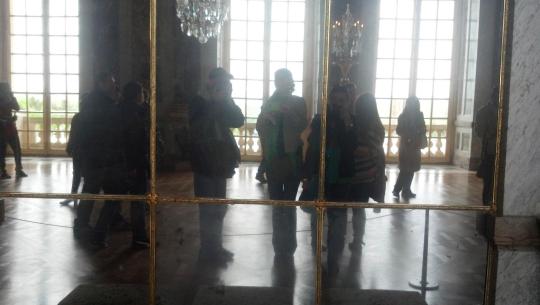
(pictured above: tourist babies taking a mirror selfie in the Versailles Hall of Mirrors--because, what else?)
Being young and dumb, we laughed at Rick. We scoffed at needing an old person guidebook. We used the “Paris 2013″ travel guide as a coaster.
BUT THEN.
We needed to know what hours the catacombs were open on Tuesdays, and Rick was on it. Three years of French language classes vanished from my mind in a cloud of social anxiety the first time I actually had to speak to someone alone, but Rick was there with a handy appendix of basic French phrases that enabled me to successfully ask the shop owner about trying on that cute a-line skirt after all.
When you bring his guidebooks along, Rick’s got your back. And he comes complete with fun facts. Glorious, glorious fun facts and (if you’re a fellow nerd and into this sort of thing) historical walking tours that you can do on your own fo freeee.
Rick is love, Rick is life, and I’m too broke to travel a whole lot but when I do, his guidebook’s like the #1 thing on my packing list (or ok like maybe #2 after ‘unisex pan-ethnic scarf’--I am studying anthro after all)

(^^^I kid not)
Anyway, I traveled abroad solo for the first time last year (lol no friends--but at least I have Rick) and his guidebook added fun and history (which is the same thing if you’re me) to the Ireland experience.
And now, finally, for the second part of this post’s title! (Cue trumpets)
One of the fun facts I found the *most* fun was in the section about Inishmore, the largest of the Aran Islands, which are celebrated for their more ‘traditional’ western Irish culture (and knitwear), and where people still speak Irish Gaelic.
I took a ferry to the island and biked around (and it was gorgeous and desolate and perfect and holy shit I think I had a spiritual experience with this pony) to the cliff-side Iron Age fort Dún Aonghasa, which was properly immense and spectacular.

(ooooooh so cliff wow)
But what of the spooky island, you ask?
Well, Rick informs us that off the coast of these Western islands, there was once said to exist a ~*mythical phantom island~* named Hy Brasil, which appeared off the coast only once every 7 years, rising from its cloaking mists. oOOOoooOOOooo. (Sounds like a plot element of the next Pirates of the Caribbean movie, right?).
This mysterious disappearing island was included on maps up until the 1800s!

(^^^ see it being weird and alone in this map from the 16th century)
Now it’s assumed to be a weird mistake (or maybe cartographers were just having a bit of fun). But the phantom, mist-shrouded island of Hy Brasil is sort of the Atlantis of Ireland, and a fun and kinda creepy historical mystery. BBC Radio even did a delightfully atmospheric radio program about it, which you can listen to here.
Thanks to Rick, staring off the cliffs of Inishmore at the dark North Atlantic took on a more mythical dimension. Yay fun (and spooky) facts!

(^^^ oooOOOOoooOOooo)
0 notes

